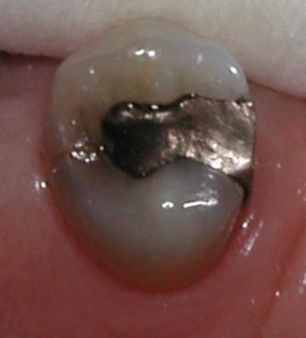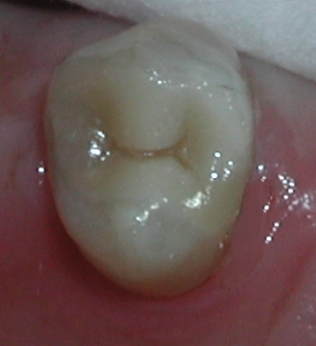There is an alternative to traditional direct restorations (fillings), that many patients are now choosing when the occlusal (chewing) surfaces of their back teeth need to be restored. This alternative is an indirect (laboratory fabricated), glass polymer restoration called an inlay. Inlays look and function much like conventional fillings do, but their composition and linkage to your teeth offer benefits that standard direct restorations cannot match.
The inlays that we employ here in the office are made of a material called glass polymer at a dental laboratory. Glass polymer is a combination of two commonly used substances in dentistry - ceramics and bonding (tooth colored filling material). They are fused together in the lab under extreme heat and pressure to produce a substance that is more durable than bonding and more tenacious than amalgam (silver) fillings. Other properties of glass polymer inlays that make them superior to direct restorations for the chewing surfaces of your back teeth include better esthetics than even bonding and the ability to strengthen the restored tooth through adhesion.

A cracked tooth with a failing restoration...
Unlike a filling that is completed in one visit, two visits are required to restore your tooth with an inlay. At the first visit your tooth is prepared for the inlay in much the same way it would be for a filling. Instead of having the restoration placed in your tooth directly after preparation as with a filling, however, an impression of the prepared tooth is taken and then a provisional inlay is placed in your tooth. The impression is then sent to a dental laboratory where it is poured in stone to create a model of your teeth. The glass polymer inlay is then produced on this model and sent back to our office. At the second visit the provisional inlay is removed from your tooth and the glass polymer one is adhesively bonded into it.

...restored with a glass polymer inlay for strength and beauty.
There are many advantages to this


